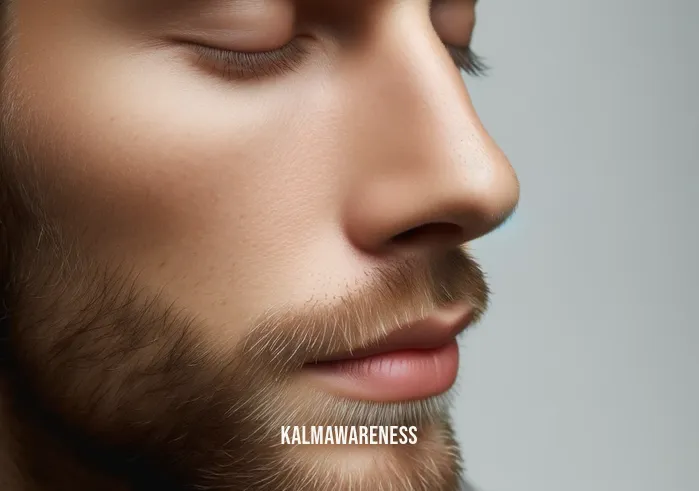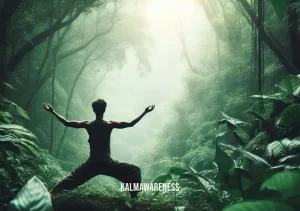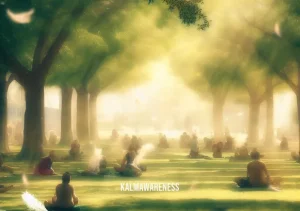Meditation Ego: A Path to Self-Awareness and Dissolution of the Self
A journey into the realm of the meditation ego, a term often used but seldom truly understood, unfolds a path of self-awareness, mindfulness, and self-reflection that leads towards ego dissolution and spiritual growth. Let’s delve into this intriguing facet of the human psyche.
Understanding the Ego
The ego, as Freud described it, is the part of our psyche that interacts with the external world. It acts as the mediator between the primitive desires of the id and the moral compass of the superego. In the journey of self-awareness and self-improvement, recognizing the role and limitations of the ego becomes paramount.
“The ego is not master in its own house.” – Sigmund Freud
However, understanding the ego is not as simple as defining it. It involves a process of self-reflection that involves turning our gaze inward and observing our own thoughts, emotions, and actions without judgment. In other words, it calls for mindfulness.
The Intersection of Mindfulness and Ego
Mindfulness is the practice of being fully present in the moment, attuned to our inner and outer experiences without getting caught in the whirlwind of our thoughts. When we observe ourselves from a distance, we begin to see the patterns of our ego – our defenses, our biases, and our need for control. We start recognizing when we’re being misaligned with our minds, clinging onto our internal narratives, and when we’re genuinely open to the experiences of the present moment.
Being mindful helps us discern the distortions of our ego, and in this discernment lies the path to ego dissolution.
Meditation Ego: The Paradox
Meditation has often been touted as a pathway to tame the ego, to reduce its overwhelming influence on our lives. But there lies a paradox – the very act of seeking ego dissolution is, in itself, an ego-driven pursuit. It is the ego that seeks to dissolve itself, creating a sort of egoic feedback loop.
But, as Zen teachings suggest, it’s not about annihilating the ego but about understanding and transcending it. In the words of the Zen master Shunryu Suzuki:
“The practice of Zen mind is beginner’s mind. The innocence of the first inquiry—what am I?—is needed throughout Zen practice. The mind of the beginner is empty, free of the habits of the expert, ready to accept, to doubt, and open to all the possibilities.“
To truly understand and unravel the mystery of the meditation ego, we must embark on a journey of mindfulness, self-reflection, and ultimately, ego dissolution. This journey may involve various stages, such as consciousness meditation or practices to connect with the higher self, all aiming towards creating a harmonious relationship with our own ego.
In our next segment, we will delve deeper into how mindfulness and meditation techniques can help us recognize and navigate the tricks of the ego. We invite you to continue reading in the second part of this article, where we will discuss how specific meditation practices can lead to ego awareness and, eventually, ego dissolution.
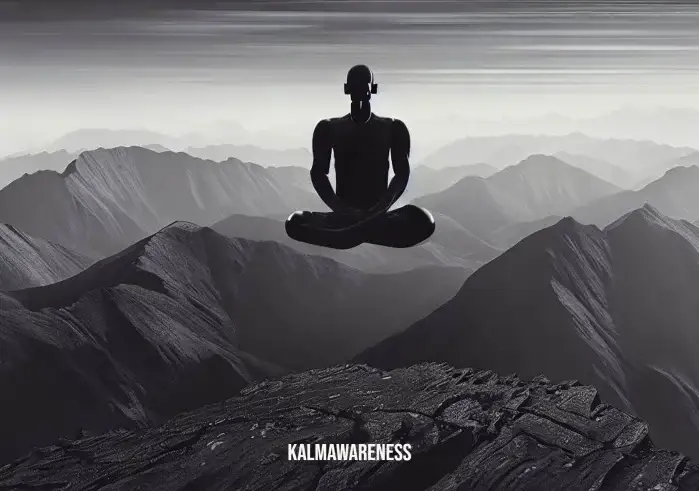
Meditation Techniques for Ego Awareness and Dissolution
Continuing from our exploration into the concept of meditation ego, we now shift our focus to the practical side. We’ll discuss specific meditation techniques that aid in recognizing, understanding, and transcending the ego. Alongside these methods, we’ll also highlight important aspects of ego, their roles in our lives, and the transformations that occur as we journey towards self-awareness and ego dissolution.
Techniques to Foster Ego Awareness
1. Mindfulness Meditation
Mindfulness meditation is an effective technique for cultivating a non-judgmental awareness of the present moment. It involves paying attention to your thoughts, feelings, and bodily sensations, without getting lost in them. As we observe the transience of our experiences, we start to disidentify from the ego, recognizing it as a changing, impersonal process rather than a fixed identity.
2. Affirmation Meditation
Affirmations are a potent tool for reshaping the subconscious patterns of the mind. They are positive, empowering statements that help to reshape our thoughts and attitudes. By repeatedly affirming truths like “I am not my thoughts” or “I am the observer,” we begin to break free from the confines of our egoic identities.
3. Mirror Meditation
Mirror meditation is a unique practice that utilizes our reflection to develop self-awareness. By observing ourselves in the mirror, we confront our self-images, self-judgments, and the roles we play, all of which are constructs of the ego.
4. Detachment Meditation
Detachment meditation involves observing our thoughts and emotions as separate from ourselves. It helps us to disengage from the ego’s grip and fosters a state of detached awareness, where we can witness our ego without getting entangled in it.
| Technique | Ego Awareness Role | Transformation |
|---|---|---|
| Mindfulness Meditation | Helps recognize the transience of thoughts and feelings | Reduction in identification with thoughts and emotions |
| Affirmation Meditation | Reshapes subconscious patterns | Positive transformation in thoughts and attitudes |
| Mirror Meditation | Confronts self-images and judgments | Greater self-awareness and reduced self-judgments |
| Detachment Meditation | Cultivates a state of detached awareness | Ability to witness ego without entanglement |
While these techniques provide a pathway to understanding and transcending the ego, it’s important to remember that the goal isn’t to annihilate the ego, but to foster a harmonious relationship with it. As the Buddhist teaching suggests, “You don’t have to throw away the darkness. You just need to light a lamp.”
A journey into the meditation ego, thus, is not about battling against a part of ourselves, but about understanding, accepting, and transcending it. It’s about realizing that there is a part of us beyond the ego – a part that is interconnected with all of existence. As we continue to explore the concept of meditation ego, we will delve deeper into the realm of ego dissolution and the transcendental experiences that lie beyond the confines of the egoic mind.
In our next segment, we will discuss the transformation that occurs as we journey from ego consciousness to egoless consciousness. We invite you to continue reading in the third part of this article, where we will delve into the realm of ego dissolution and explore the transcendental experiences that lie beyond the confines of the egoic mind.

The Transformation: From Ego Consciousness to Egoless Consciousness
As we delve further into our exploration of meditation ego, let’s shift our focus towards the transformational aspect of the journey. This transformation, often described as a shift from ego consciousness to egoless consciousness, is marked by a profound change in self-perception and worldview.
A quote by the renowned spiritual teacher Eckhart Tolle brings to light this transformative journey: “The primary cause of unhappiness is never the situation but your thoughts about it. Be aware of the thoughts you are thinking.”
Understanding Ego Consciousness
In our ego-conscious state, our identity is entwined with our thoughts, emotions, and experiences. We see ourselves as separate entities navigating a world of objects, people, and events perceived as other. Our minds are filled with continuous inner chatter, often revolving around the past and future, generating a sense of restlessness and dissatisfaction.
The Shift to Egoless Consciousness
The transformation to an egoless consciousness occurs as we continually practice mindfulness and meditation. Our identification with the thinking mind and the feeling body begins to loosen. As we disidentify from our ego, we begin to experience a sense of stillness and inner peace. Our perception of separateness starts to dissolve, and we start to experience the interconnectedness of all existence.
Thich Nhat Hanh, a Zen Buddhist master, beautifully articulates this state: “We are here to awaken from the illusion of our separateness.”
Recognizing the Signs of Transformation
There are several signs that indicate a shift from ego consciousness to egoless consciousness. These signs are often experienced during or after prolonged periods of meditation practice.
- Reduced inner chatter: Your mind becomes quieter. The incessant stream of thoughts diminishes, giving way to a serene inner silence.
- Increased present moment awareness: You experience a heightened awareness of the present moment. The past and the future lose their grip, and you dwell more in the ‘now’.
- Sense of interconnectedness: You begin to feel a profound connection with all beings and the universe itself. The sense of separateness dissolves.
- Increased empathy and compassion: You exhibit more empathy towards others, understanding their experiences and emotions deeply. Compassion becomes a natural response.
- Experiencing peace and joy: A profound sense of peace and joy becomes a common experience, independent of external circumstances.
These signs are not a definitive checklist but indicators of a transformative shift. As you progress in your practice, you might experience some, all, or different signs. Remember, the journey of meditation ego is deeply personal and unique.
As Rumi, the 13th-century Persian poet and Sufi mystic, said: “Do not feel lonely, the entire universe is inside you.”
As we move forward in our exploration of meditation ego, we’ll delve into how to navigate the challenges that arise during this transformation. We invite you to continue on to the next part of this article, where we will discuss the practical tools and techniques to handle the upheavals of the ego dissolution process.
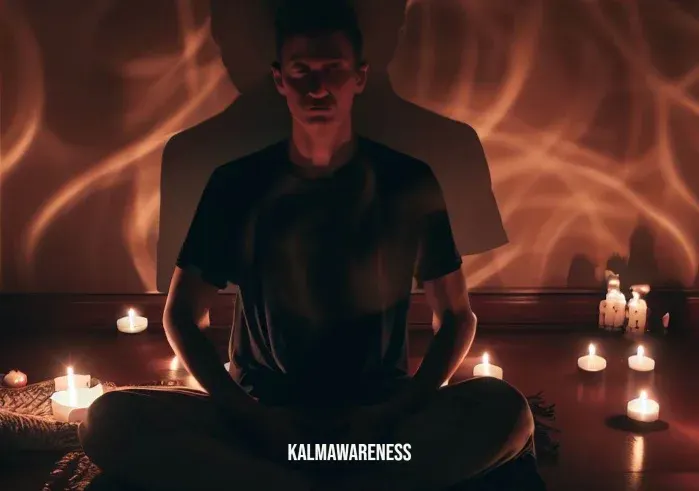
Guiding Through the Challenges: Meditation Ego Transformation
As we traverse further in our quest of understanding meditation ego, we now cast light on an often overlooked aspect – the challenges faced during the transformation. Ego dissolution isn’t a smooth ride, and it can bring up previously unexplored or suppressed emotions and memories. It’s a journey, not a destination, and it requires consistent practice, patience, and courage.
“Do not judge me by my success, judge me by how many times I fell down and got back up again.” – Nelson Mandela
The Challenges of Ego Dissolution
Embarking on the path of meditation ego involves challenges that are unique and vary from person to person. Some common ones include:
- Facing the Unknown: The process of ego dissolution leads you into uncharted territory. This can bring about fear and discomfort.
- Surfacing of Suppressed Emotions: As the ego’s grip loosens, suppressed feelings and memories may surface, leading to emotional upheavals.
- Sense of Loss: The dissolving of ego identity can bring about a sense of loss, leading to feelings of emptiness or confusion.
- Resistance from Ego: The ego, in a bid to maintain its existence, may create resistance against the practice, creating obstacles in the path.
Navigating the Challenges
Navigating these challenges requires a balanced approach and a steadfast commitment to the practice. Here are some ways to effectively manage them:
- Awareness: Be aware of the challenges that might arise during your meditation ego journey. Acknowledge them without judgement or resistance.
- Patience: Understand that the transformation process takes time. Be patient with yourself and the journey.
- Support: Seek support when necessary. This could be in the form of a meditation teacher, supportive community, or guidance from spiritual teachers.
- Consistent Practice: Consistency is key in meditation. Regular practice will help ease the transformation process.
| Challenges of Ego Dissolution | Navigating the Challenges |
|---|---|
| Facing the Unknown | Awareness |
| Surfacing of Suppressed Emotions | Patience |
| Sense of Loss | Support |
| Resistance from Ego | Consistent Practice |
“Courage doesn’t always roar. Sometimes courage is the quiet voice at the end of the day saying, ‘I will try again tomorrow.'” – Mary Anne Radmacher
In the next part of our journey exploring meditation ego, we’ll venture into the realm of understanding the benefits of ego dissolution and the gifts that this transformation brings to your life. We invite you to continue to the next part of this article, where you will discover the radiant outcome that awaits after weathering the challenges of ego dissolution.
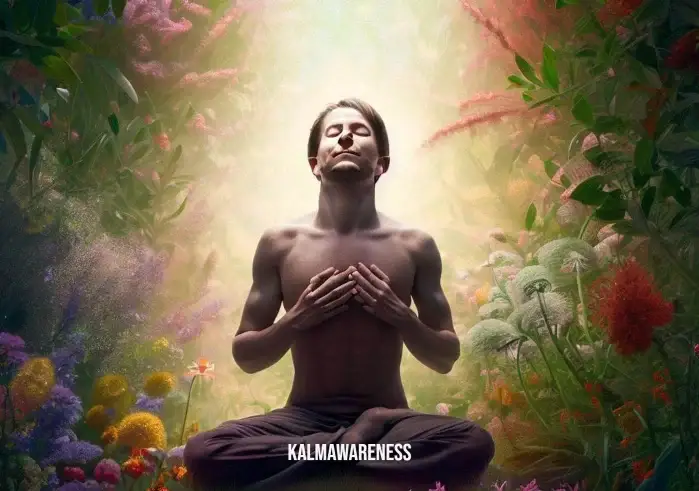
Reaping the Rewards: The Gift of Meditation Ego Dissolution
Moving forward in our meditation ego journey, we arrive at the stage where the seed sown in the soil of conscious effort starts to bloom – the rewards of ego dissolution. These are not prizes to be won but insights to be discovered and embraced.
“The only impossible journey is the one you never begin.” – Tony Robbins
The Path to Liberation
When we undertake meditation ego practices, our intention is not to completely eliminate the ego but to release its dominating grip over our lives. This brings us towards a newfound freedom, a sense of liberation.
- Inner Peace: As the struggles and conflicts born out of the ego dissolve, we start to experience an inner tranquillity, a peace that remains unshaken despite external circumstances.
- Heightened Consciousness: Ego dissolution leads to an expansion of consciousness, giving rise to a broader perspective of life. We no longer see the world merely through the lens of “I”, “me”, and “mine”.
- Authentic Living: Free from the ego’s shackles, we can start living authentically, in alignment with our true self. We become more genuine in our interactions and responses to life situations.
Embracing Oneness
Another profound gift that emerges from meditation ego dissolution is a sense of oneness.
- Interconnectedness: With the ego veil lifted, we realize our interconnectedness with all beings and the world around us. This nurtures empathy, compassion, and a sense of unity.
- Respect for All Life: This sense of oneness cultivates deep respect and reverence for all life forms. It reminds us of our shared existence and the importance of harmony.
- Dissolution of Boundaries: Oneness leads to the dissolution of boundaries and distinctions that the ego creates. We begin to see the inherent beauty and divinity in all things.
The Gift of Presence
One of the most precious rewards of meditation ego is the gift of presence.
- Mindfulness: We become more present and conscious in every moment, embracing life in its fullness. We become mindful, aware of our thoughts, feelings, and actions.
- Joy in Simplicity: The present moment awareness brings with it the joy of simplicity. We find contentment in ordinary moments, appreciating the beauty in the ‘now’.
- Quality Relationships: Being fully present enhances our relationships as we start to listen and engage more genuinely.
| Path to Liberation | Embracing Oneness | Gift of Presence |
|---|---|---|
| Inner Peace | Interconnectedness | Mindfulness |
| Heightened Consciousness | Respect for All Life | Joy in Simplicity |
| Authentic Living | Dissolution of Boundaries | Quality Relationships |
“The journey of a thousand miles begins with one step.” – Lao Tzu
In the concluding part of our meditation ego exploration, we will delve into how to maintain the state of ego dissolution, ensuring the transformation is not a fleeting moment but a lasting change. We invite you to continue to the next part of this article, where we’ll provide you with practical tips and strategies to sustain this enlightened state.

The Everlasting Journey: Sustaining the Enlightened State of Meditation Ego Dissolution
As we reach the last stage of our journey through the labyrinth of meditation ego, we come to realize that reaching the state of ego dissolution is not an end in itself but the beginning of a new, enlightened path. This journey is not a sprint but a marathon, and maintaining this state of awakened consciousness requires practice and perseverance.
“The journey not the arrival matters.” – T. S. Eliot
Maintaining the Enlightened State
Navigating through the dynamics of meditation ego, you might experience fleeting moments of ego dissolution. The challenge lies in sustaining these experiences and integrating them into everyday life. Here are some ways to achieve this:
- Consistent Practice: Consistency is key. The practice of meditation should be woven into your daily routine, like eating or breathing. A few minutes a day can make a significant difference.
- Mindful Living: Incorporate mindfulness into all aspects of your life. Whether it’s eating, walking, or doing chores, aim to be fully present in every moment.
- Check-ins: Regular self-check-ins can help in catching when the ego starts to creep back in. Identify the signs and gently guide your attention back to the present moment.
- Cultivating Compassion: Practice empathy and compassion towards others and yourself. This counters the ego’s tendencies for self-centeredness and cultivates a sense of oneness.
- Continuous Learning: The path of enlightenment is a lifelong journey. Continue learning, exploring, and growing. Keep an open mind and heart.
Embarking on Your Journey
It’s time now to put the theory into practice and embark on your personal journey towards meditation ego dissolution. Remember, each person’s experience is unique, and the path will unfold differently for each one of us. So, be patient, be persistent, and most importantly, be kind to yourself.
Remember this journey is not about reaching a destination but experiencing every step along the way. The Buddha said, “It is better to travel well than to arrive.” Embrace the journey and all the learning it brings.
“The only journey is the one within.” – Rainer Maria Rilke
And with that, we come to the end of our exploration of meditation ego. We hope this guide has given you the understanding and the tools you need to navigate this profound journey towards self-awareness and liberation.
We invite you to explore more enriching content and resources on meditation and self-awareness in our collection. You may also like to delve deeper into topics like emotional curiosity and how to sit with emotions to further support your journey.
Remember, you’re not alone in this journey. We’re here to support you every step of the way. Here’s to your journey to inner peace, heightened consciousness, and an enlightened life!

